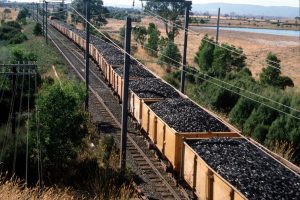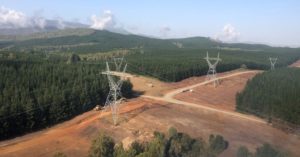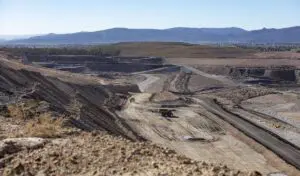Water could become a serious constraint on China’s coal industry, electricity production and economic growth in coming decades without major improvements in energy and water efficiency, according to a report by HSBC Global Research.
In 2011 the coal industry, from mining to power generation and coal-to-chemicals conversion, accounted for roughly one-sixth of China’s water withdrawals, the total amount taken from a water source.
“This level of water use is not sustainable; water tables are declining and in some areas coal mining is already being constrained,” the report said.
The lion’s share, 87 per cent, of water withdrawals is for coal-fired power generation, which supplies 80 per cent of the nation’s power. Typically, the Chinese power sector consumes about 12 per cent of the water that it withdraws.
The report says that if China fails to reduce the coal industry’s water consumption then “long-run volume growth rates in the coal sector will be limited; the growth rates of the past decade are over”. It also warns that “investment decisions in the coal supply chain – whether by companies, investors or lenders – will increasingly have to factor in water-related risks.”
HSBC estimated that if coal mining in China were severely constrained by a lack of water from 2030, their share valuation of coal miner China Shenhua could be reduced by as much as 26 per cent and China Coal by 45 per cent.
Similarly if there were shut downs by power stations due to a lack of water by 2030 the share value of Huaneng Power could fall by about 30 per cent.
Under HSBC’s business-as-usual scenario water usage in China’s coal sector could increase from the 2008 level of 90.6 billion cubic metres by 80 per cent by 2020 to 163.7 billion cubic metres and by 160 per cent to 238 billion cubic litres by 2035 without major improvements in the efficiency of energy and water use. (The scenario assumes that China, in the long term, moves towards self-sufficiency in coal).
It uses an IEA forecast, based on current policies, that coal demand will rise by an average of 2.2 per cent in 2008-35 which would see coal consumption rise from 2.76 billion tonnes in 2008 to 4.11bn tonnes in 2020 and further to 5.03bn tonnes in 2035.
The major driver of this demand for coal will be the power sector. The IEA forecast assumes that China sets up 600GW of new coal-fired power generation capacity over the forecast period. This is comparable with current combined coal capacity of the US, EU and Japan.
HSBC’s optimistic scenario finds China’s coal sector returning to 2008 water usage levels by 2025, driven largely by a 50 per cent reduction in water use by coal fired power plants between 2008 and 2025 and another 30 per cent reduction over the next decade.
It says this should be achievable if China adopts energy efficient growth policies, restricting coal use to 2020 levels, and better technologies.
“If not, coal-related water withdrawals will continue to increase, and put further constraints on growth,” the report said.
Renewable could also help reduce water use in the power sector. China saw a fuel mix change in the past decade, as the number of coal new-builds was capped by environmental concerns and a desire to diversify fuel sources. Total renewable installed capacity (excluding hydro) accounted for 9 per cent of total capacity in 2011 versus 2 per cent of total capacity in 2005.
In the coal mining sector, China has some 15,000 mines with a combined production of 3.7bn tonnes in 2012. Roughly 70 per cent of them are located in water–scarce regions and 40 per cent are estimated to have severe water shortages.
China’s northern region has the largest coal resource, centred around the province of Shinxi, and is one of the driest parts of the country. Thanks to irrigation from underground aquifers, it is also China’s most productive agricultural region producing one half of its grain and nearly all of its wheat and maize.
“Since the 1970s – or perhaps even earlier – the rate of water withdrawal has been unsustainable to the extent that water tables have been dropping by roughly one metre per annum across northern China,” the report says.
Further stress on water resources is coming from China’s growing population with some estimates suggesting agricultural production will need to increase by 30 per cent by 2030.
The report says that water constraints on China’s coal industry will not lead us to an emissions reduction trajectory below 450 part per million and the safety of a 2°C global average temperature rise. For this to happen the level of total coal demand in China would need to be less than in 2008.
“Given the economic growth to come and China’s reliance on coal, this seems optimistic to us. We do not use this (450 ppm) scenario in our analysis,” the authors said.









